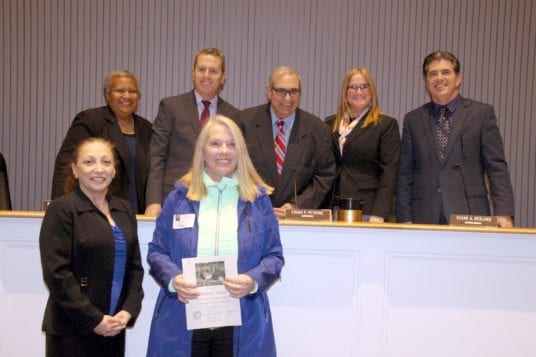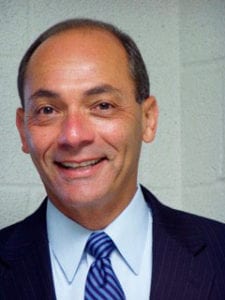The big guns brought it home for Mount Sinai.
John Parente won by a major decision, 12-0, at 195 pounds, and Bobby Christ edged his opponent, 4-3, in the finals to propel Mount Sinai to a second-place finish behind Half Hollow Hills West at the Bob Armstrong wrestling tournament at Port Jefferson Jan. 21.
“I told them if you want to wrestle in the county tournament this is the last time to show us what you’ve got,” Mount Sinai head coach Matt Armstrong, who is also Bob’s son, said he told his team. “A freshman that just came up, Adam Shata, had a big win at 160 pound with a solid pin, so we have some freshmen that are really stepping up.”
Jahvan Brown at 138 pounds and Neil Esposito at 145 pounds, made some noise and, according to Armstrong, are wrestling well for this time of year despite their inexperience. Although neither made it to the finals, four other Mustangs did. The team had nine place in total.
“We’re turning it around here toward the end of the season.”
—Robert Alberti
Northport finished with 168 points, just behind Mount Sinai, which finished with 174.
Unlike the Mustangs, the Tigers brought it home in the finals, as all three representing the blue-and-gold took home tournament titles.
“We’re turning it around here toward the end of the season,” Northport head coach Robert Alberti said. Seven of his other wrestlers placed.
Junior Jake Borland, a 113-pounder, is currently ranked sixth in the county in his weight class. He topped Mount Sinai’s Matt Campo, 9-2, who is a returning county champion.
“We expect him to win every time he goes out,” Alberti said of his grappler. “It was a good test for him leading up to counties.”
Borland placed third in the Armstrong tournament last year, and brought his A-game this time around. He won his first match with a pin, and the next two by technical falls.
“I feel confident scoring points,” he said, adding that he knew he had to have a strong mentality and wrestle smart to win in the finals, using his fireman’s carry, duck under and high crotch to help him gain points.
Borland said he can see improvements in his game from last season.
“I got better at getting out on bottom, because last year I struggled with that,” he said. “Now I get right up. Right after [Campo] took me down I got out and took a shot, and I got him right to his back and scored. I got two for a takedown and three for back points and from there I started scoring.”
“[Kenny Cracchiola] wants to make an impact and he’s really done it. He’s beaten some really good guys and overall, matchup-to-matchup, he continues to be a dominant wrestler.”
—Garry Schnettler
At 132 pounds, junior Chris Esposito clinched the championship title with a 9-2 decision over Ward Melville’s Rafael Lievano, who is currently ranked third in the county. Esposito beat his opponent last weekend as well.
“That was a good statement for Chris to come out and beat the kid for a second time in a row,” Alberti said. “He’s showing the county that he’s here to wrestle, and he’s not going to be happy without winning.”
Esposito was named the Most Outstanding Wrestler after recording the most pins in the least amount of time. He pinned his first opponent in 20 seconds, his second in 59 and his third in 1:30, before sizing up his final foe. He said he came into the match knowing what he needed to do, and he wanted to prove that his win last weekend wasn’t a fluke.
“I knew the first time I wrestled him I didn’t wrestle as good as I could,” Esposito said. “Mentally, every time I go out to a match I’m calm, no matter what. I always want to score first, but even if I get scored on I never lose it; I remain calm and keep working.”
Billy Shaw was the final champion for Northport, who won 6-5 over Mount Sinai’s Joe Goodrich at 152 pounds. It was the grappler’s first tournament win.
“He had a tough match at North Babylon on Friday wrestling the No. 1-ranked kid in the county — he got beat up a little bit,” Alberti said. ”So for him to come out the next day and win his first tournament as a varsity wrestler is good for him. For him to turn around is a testament to his hard work.”
Ward Melville finished fourth with 136 points. In a unique and rare scenario, Kenny Cracchiola beat teammate Richie Munoz by a technical fall, 16-0.
Cracchiola went 4-0 on the day, winning three of his matches by technical falls and the other by a pin.
“I shoot single legs to take them down and on top I do a variety of different tilts for back points, which rack up points for me pretty quickly,” he said.
“Even before I step on the mat I’m always focused on wrestling, nothing else distracts me.”
—Vin Miceli
Unfortunately, he had to use these moves against his teammate, but he said he liked seeing two Patriots make it to the finals in the same weight class.
Port Jefferson followed in fifth place with 126.5 points, and sent seven to the podium.
Vin Miceli edged Centereach’s Luis Fernandez, 6-4, and was named the Champion of Champions. He had two pins as he battled his way through the bracket.
He said he focused to be able to bring home the gold.
“Even before I step on the mat I’m always focused on wrestling, nothing else distracts me,” he said. “I put in a lot of work in the off-season, so it really shows how much you can get out of the work you put in.”
Joey Evangelista edged Half Hollow Hills West’s Joe Costa, 3-0, for his title at 145 pounds. He pinned his first three opponents, but said his finals match was tough.
“My coaches have preached mentality is everything, so I’ve been working on strengthening that,” he said.
According to head coach Mike Maletta, the junior has been a finalist in every tournament this season, and won two.
“As long as they both stay aggressive and take smart shots and pushing the pace, they’re going to be real successful in three weeks when they’re up in Albany,” Maletta said of the possibility of the Royals competing for state titles. “The excitement is that some guys are starting to exceed expectations.”
Centereach finished in seventh with 93 points. Jett Tancsik outscored his Half Hollow Hills West opponent 9-4, for the 160-pound championship title.
Centereach head coach Ray Bruno said he was pleased with his team’s performance. He said the tournament is a good tune up to get ready for the Cougars’ matches in the League III tournament.
“This is probably the 10th year for this tournament and I appreciate them doing it keeping my dad’s memory alive.”
— Matt Armstrong
Rounding out the scorers in the top 9 were No. 8 Harborfields with 88 points, and Comsewogue with 39.
According to Matt Armstrong, his father coached at Port Jefferson from 1969 to 1990, where they were league champions for eight years and won the New York State championship cup in 1986.
“They had some very successful teams here at the time,” he said. “It’s great to come back here as I see a lot of people I haven’t seen in a long time. Many of the kid’s parents wrestled for my dad. This is probably the 10th year for this tournament and I appreciate them doing it keeping my dad’s memory alive, it’s Mike Maletta who keeps it going, and he does a great job.”
Borland said his Northport team has exceeded his expectations, and he’s looking forward to rounding out the season with the final dual meet of the season Jan. 27 at Smithtown West at 6:45 p.m., before heading to Syosset for the Battle of the Belt tournament the next day.
“Coming into this year I thought we were going to be absolutely terrible,” he said. “I thought we were going to have three good kids and we were going to be that team that gets beat up on, but I realized we have a few freshmen that are going to make very good wrestlers. We’re a young team, but we’re doing damage.”
Bill Landon contributed reporting














































































